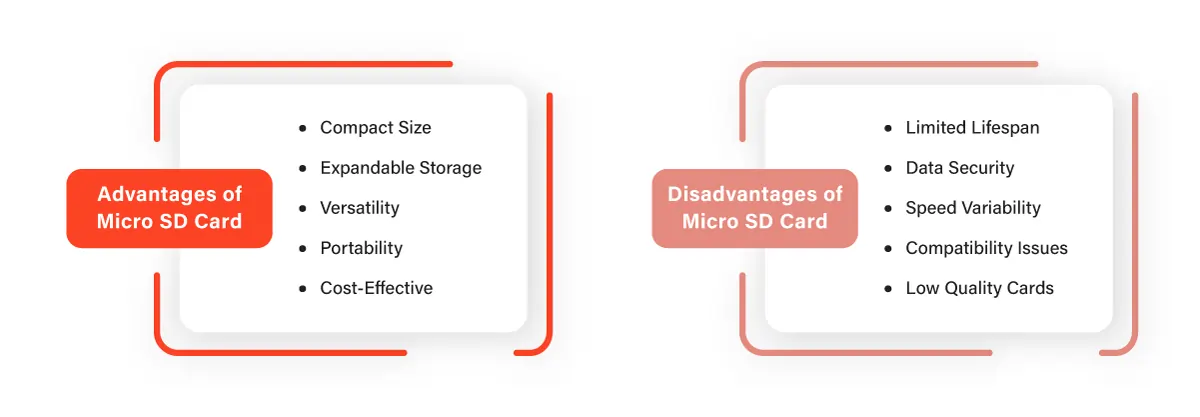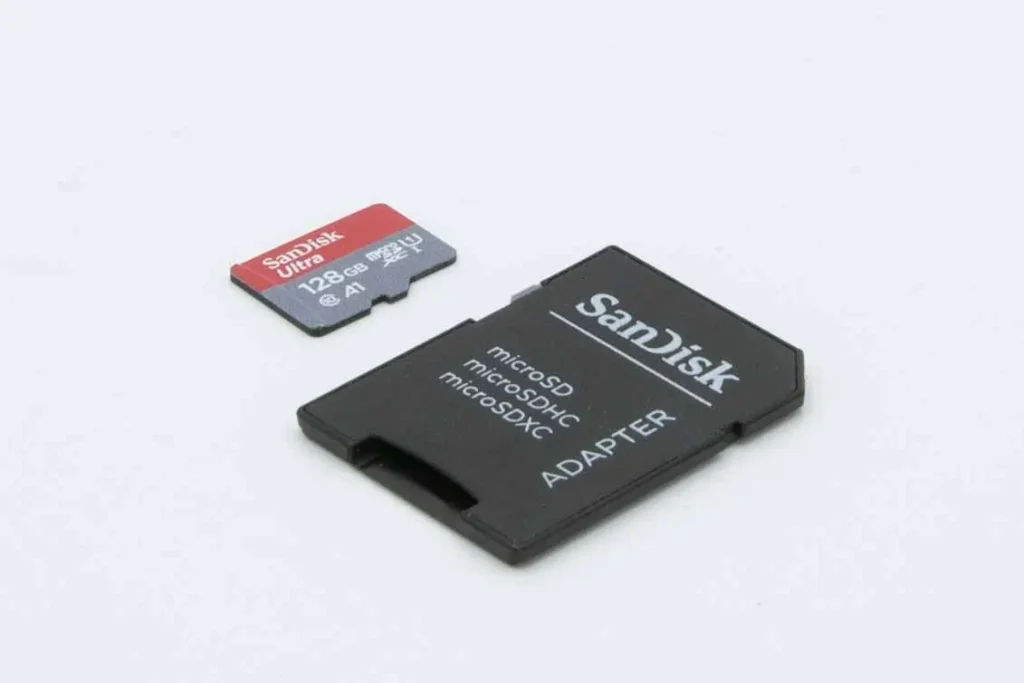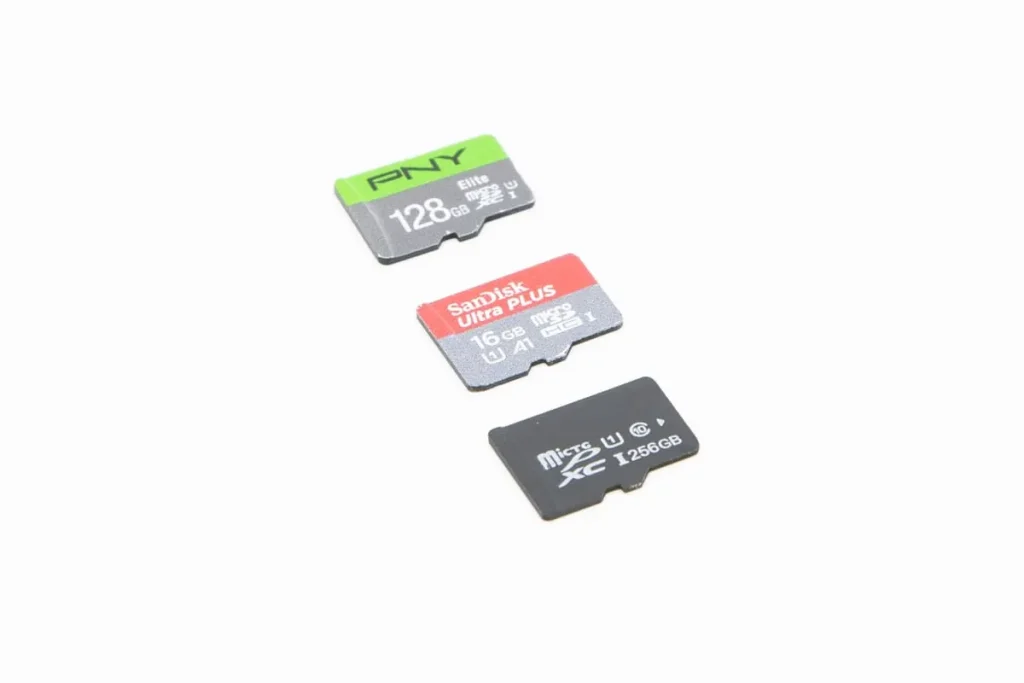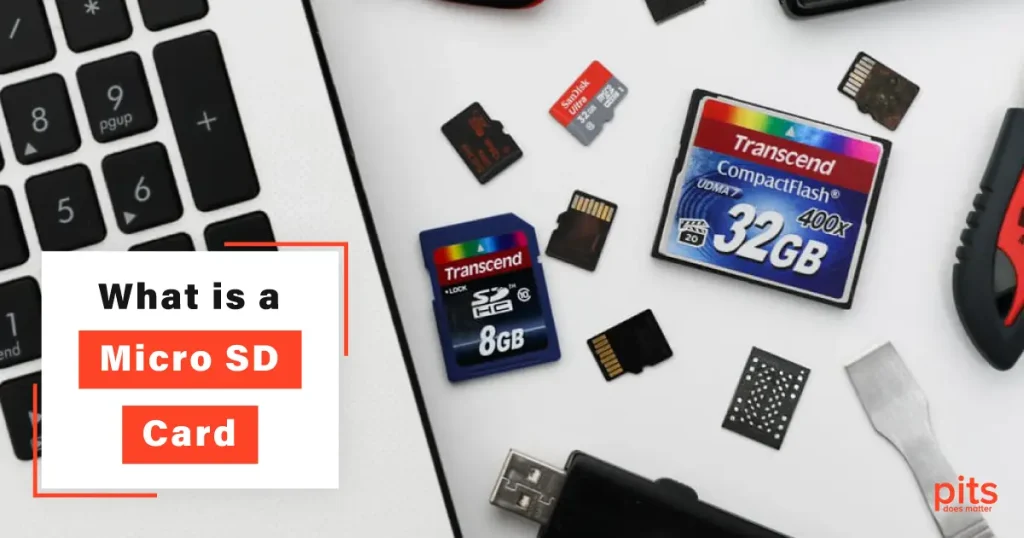In the swiftly progressing realm of technology, our requirements for data storage have witnessed substantial growth. Transitioning from the conventional full-sized SD cards to the more compact Micro SD format, these flash memory cards have profoundly transformed the landscape of data storage, transmission, and retrieval. In this scholarly discourse, we shall embark upon an exploration of the progressive journey of Micro SD cards. We shall meticulously assess their merits and demerits, discern their diverse applications across a spectrum of devices, and delve into the pivotal aspect of SD card speeds. By the culmination of this discourse, you shall possess a heightened comprehension of this versatile storage solution and its profound influence on our daily existence.
Comprehending Memory Card Formats
Memory card formats represent portable storage devices employed for the storage and transfer of data across an array of electronic devices, encompassing smartphones, cameras, drones, gaming consoles, and more. The two principal formats in use are full-sized SD cards and Micro SD cards, both of which employ flash memory technology for the secure retention of data.
Full-Sized SD Cards: The original Secure Digital (SD) card format, established in 1999 by the SD Association, marked a significant advancement in digital storage. These cards typically possess dimensions of 32 x 24 x 2.1 mm and find common utilization in digital cameras, camcorders, and laptops.
In response to evolving technological requirements, there emerged a demand for more compact and versatile storage solutions, culminating in the inception of Micro SD cards.
Micro SD Cards: The Micro SD format, introduced in 2005, presents a diminutive variant of the standard SD card. Measuring a mere 15 x 11 x 1 mm, these miniature cards prove particularly well-suited for smaller devices such as smartphones, tablets, action cameras, and gaming consoles. It is worth noting that Micro SD cards maintain backward compatibility with standard SD card slots through the deployment of SD adapters.

The Emergence of Micro SD Cards
The inception of Micro SD cards was spurred by the growing demand for heightened storage capacities in mobile devices. As smartphones advanced in capability and functionality, users found themselves in need of expanded storage provisions to accommodate a burgeoning array of photographs, videos, applications, and other data. Micro SD cards ingeniously addressed this requirement by furnishing a compact and dependable storage solution.
Advantages of Micro SD Cards
Micro SD cards are underpinned by several advantages that have substantially contributed to their widespread adoption:
- Compact Dimensions: The most conspicuous merit of Micro SD cards resides in their petite stature. Their diminutive form factor facilitates effortless integration into slimline smartphones, drones, action cameras, and various other portable devices.

- Elevated Storage Capacity: Notwithstanding their small physical size, Micro SD cards offer an impressive array of storage capacities. They are available in diverse sizes, spanning from a few gigabytes to several terabytes, thus catering to the needs of both casual users and professionals alike.
- Versatility: Micro SD cards exemplify versatility and can be employed across an array of devices featuring an SD card slot. Through the application of SD adapters, these cards can be utilized within full-sized SD card slots, rendering them compatible with a broad spectrum of devices.
- Effortless Data Transference: The seamless transfer of data between devices is greatly facilitated by Micro SD cards. Users can effortlessly transport files from their smartphones to computers or other compatible devices, obviating the necessity for intricate cables or software applications.
Drawbacks of Micro SD Cards
- Despite the numerous advantages associated with Micro SD cards, they are not exempt from certain limitations:
- Diminished Speed: When compared to their full-sized SD counterparts, Micro SD cards may exhibit marginally slower read and write speeds, particularly in lower-tier models. This can potentially impact performance when dealing with substantial files or conducting continuous data recording.
- Susceptibility to Loss: Owing to their petite dimensions, Micro SD cards are more susceptible to misplacement or loss in comparison to their larger counterparts. To mitigate this risk, it is imperative for users to handle these cards with precision and consider the use of protective enclosures.
- Finite Lifespan: Similar to all flash memory cards, Micro SD cards are subject to a finite number of read and write cycles. Frequent and intensive data operations can lead to a reduction in their operational lifespan over time.
- Compatibility Challenges: In certain instances, particular devices may not offer support for Micro SD cards or may necessitate a firmware update to accommodate higher-capacity cards.
Understanding SD Card Speeds
The assessment of SD card speeds holds paramount significance, particularly when dealing with high-definition media and resource-intensive applications. The evaluation of a card’s performance capabilities hinges upon the speed class rating and the assorted speed classes associated with it.
Speed Class Rating: The Speed Class rating serves to specify the minimum sustained write speeds attainable by an SD card. The SD Association has established four standard Speed Classes: Class 2, Class 4, Class 6, and Class 10. Each class denotes the minimal MB/s (megabytes per second) write speed achievable by the card.
- Ultra High-Speed (UHS) Speed Classes: To facilitate swifter data transfer, UHS-I and UHS-II speed classes are at one’s disposal. UHS-I cards exhibit superior data transfer rates in comparison to traditional Speed Classes, while UHS-II cards offer even greater speeds suitable for professional applications.
- Application Performance Class: The introduction of the Application Performance Class (A1 and A2) serves the purpose of assessing the card’s capabilities in terms of random read and write operations. A2 cards, in particular, deliver enhanced performance, rendering them well-suited for the direct execution of applications from the memory card.

Micro SD cards have ushered in a transformative era in the realm of data storage and accessibility across a diverse spectrum of devices, ranging from smartphones and cameras to gaming consoles and drones. Their compact dimensions, expansive storage capacities, and adaptability have positioned them as an indispensable component within the contemporary digital landscape. Although not without limitations, the merits of Micro SD cards outweigh the demerits, and with the relentless progression of technology, these cards are poised to continue their pivotal role in our daily existence. As our storage requisites evolve, it is certain that manufacturers will persistently push the boundaries of Micro SD cards, proffering even greater capacities and heightened speeds to cater to the insatiable demands of our data-centric world.
Micro SD Card Data Recovery through PITS
The retrieval of data from a Micro SD card entails a complex and delicate procedure, demanding both expertise and meticulous handling. These diminutive cards house valuable data, and each step taken during the recovery process carries significant consequences.
Within our organization, we acknowledge the paramount importance of our customers’ data. Consequently, we exert every effort to achieve the most optimal recovery outcomes. By utilizing precision tools and operating within an ISO Certified Class 10 Cleanroom environment, we guarantee the safety of your device throughout the procedure. This controlled environment ensures the protection of your delicate Micro SD card from potential harm caused by humidity, contaminants, or particulate matter.
In addition to our data recovery services, we extend to our customers the provision of a technical assessment aimed at expediting the resolution of failure scenarios. Should you observe any indications of a malfunction, such as your Micro SD card not being recognized or missing files, we urge you to promptly dispatch it to our data recovery laboratory. Our proficient technicians will execute a comprehensive evaluation to pinpoint the underlying cause of the malfunction and gauge the extent of the damage.
Damaged Micro SD cards can precipitate a host of issues, but with our cadre of specialists, you can dispel such concerns. Our dedicated services ensure the proficient resolution of all these complications, instilling confidence in our capacity to successfully recover your deleted files.
Frequently Asked Questions
What Constitutes a Micro SD Card?
A Micro SD card is a diminutive, portable storage device designed for the purpose of storing and transmitting data across a variety of electronic devices, including but not limited to smartphones, cameras, drones, and tablets. It presents a compact iteration of the conventional SD card and closely resembles the size of a human fingernail.
How is a Micro SD Card Inserted into a Device?
To insert a Micro SD card, one should first locate the card slot on the device in question. With gentle precision, insert the Micro SD card into the designated slot until it firmly clicks into place. It is imperative to ensure that the card is correctly aligned with the slot to prevent any potential damage.
What Quantity of Data Can a Micro SD Card Accommodate?
The storage capacity of a Micro SD card is variable, with options available in diverse sizes, encompassing 16GB, 32GB, 64GB, 128GB, and beyond. The selection of a particular capacity hinges upon individual storage requirements and the nature of the files intended for storage, such as photographs, videos, music, or applications.
Can a Micro SD Card be Utilised with a Smartphone?
The majority of smartphones are equipped to accommodate Micro SD cards, albeit it is imperative to consult the specifications of one’s phone to ascertain compatibility. Particular attention should be paid to the Micro SD card’s capacity that the phone can effectively handle, along with consideration of the speed class should there be a need to capture high-quality videos or store substantial files.
How is Data Transferred from a Micro SD Card to a Computer?
To facilitate the transfer of data from a Micro SD card to a computer, the utilization of a Micro SD card reader is recommended. Insert the Micro SD card into the card reader and subsequently connect the reader to a USB port on the computer. Your computer should promptly recognize the card, thereby allowing you to access and transfer files seamlessly between the card and the computer’s storage.
